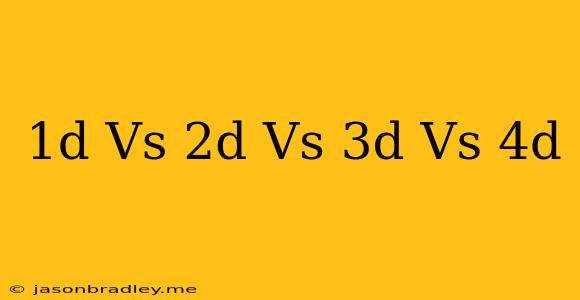Here is an article about 1D, 2D, 3D, and 4D:
Understanding Dimensions: From 1D to 4D
Dimensions are a fundamental concept in geometry and physics, defining the number of independent directions or degrees of freedom an object can move in. We experience three dimensions in our daily lives: length, width, and height. But what happens when we add more dimensions? Let's explore the world of 1D, 2D, 3D, and even 4D.
1D: The Line
Imagine a line. It has only one dimension: length. You can move along the line in one direction or the opposite direction. Think of a number line or a straight road. You can only move forward or backward.
2D: The Plane
Add another dimension, and you get a plane. This is like a sheet of paper or a flat surface. You can now move in two directions: length and width. You can walk forward, backward, left, and right.
3D: Our Reality
The world we live in is three-dimensional. We can move in three directions: length, width, and height. We can walk forward, backward, left, right, up, and down.
4D: A Glimpse into the Unknown
The fourth dimension is harder to grasp because we can't directly experience it. In physics, the fourth dimension is often time. Time allows objects to exist in different positions over time, creating a sequence of events.
Imagine a video: It is a collection of images (2D) displayed in sequence over time (4D), giving the illusion of movement.
Beyond 4D: A Theoretical Realm
Beyond the fourth dimension, it gets even more theoretical. Mathematicians and physicists speculate about higher dimensions, but their exact nature is unknown. Some theories propose that these higher dimensions could hold the key to understanding gravity and the universe's mysteries.
Key Takeaways:
- Dimensions define the number of independent directions an object can move in.
- We experience three dimensions: length, width, and height.
- Time is often considered the fourth dimension.
- Higher dimensions beyond the fourth are theoretical concepts explored in advanced physics and mathematics.
Understanding dimensions helps us better comprehend the world around us, from the simple line to the complexities of space-time. As we continue to explore the universe, the concept of dimensions plays a crucial role in our quest to unlock its secrets.
